Reimagining Industry for Ecological Resilience From Extraction to Regeneration – A New Blueprint for Production
Introduction – The Crossroads of Industry and Ecology
Manufacturing has long been a cornerstone of human progress, driving innovation, infrastructure, and employment. Yet its environmental toll—from carbon emissions and toxic waste to resource depletion and biodiversity loss—has become impossible to ignore. As the climate crisis intensifies, the imperative to reconcile industrial activity with ecological health grows more urgent. The traditional linear model of production—take, make, dispose—is being replaced by circular, regenerative systems that aim not only to minimize harm but to actively restore ecosystems. This transformation demands more than technical upgrades; it requires a philosophical reimagining of what manufacturing is and what it can become. Can factories mimic forests, where every output feeds another input? Can supply chains become lifelines for communities and habitats? These questions are no longer theoretical. Across the globe, pilot projects, policy shifts, and visionary design labs are already charting a new path forward.

The Historical Divide – Industry vs. Environment
The Industrial Revolution marked a turning point in human history, unleashing unprecedented productivity but also widespread environmental degradation. Early factories relied heavily on coal and water power, disrupting ecosystems and polluting air and rivers. Over time, manufacturing became synonymous with smog, soot, and toxic runoff, especially in urban centers. Environmental movements in the 20th century pushed back, demanding cleaner practices and corporate accountability. Yet industry often viewed regulation as a threat rather than a catalyst for innovation. Globalization further complicated the picture, outsourcing pollution to less regulated regions and externalizing environmental costs. This legacy shaped public perception, casting manufacturing as inherently harmful. However, innovation offers a different narrative—one where industry becomes a force for restoration. Bridging the historical divide requires systemic change, not just incremental tweaks. Manufacturing must evolve from a taker to a caretaker, integrating ecological intelligence at every level. The question is no longer whether industry can change, but how deeply and how fast.

Circular Economy – Closing the Loop
The circular economy challenges the outdated “take-make-waste” model by replacing it with regenerative cycles. In manufacturing, this means designing products for reuse, repair, and recycling rather than disposal. Materials are kept in circulation, reducing the need for virgin extraction and minimizing waste. Technologies like blockchain and digital twins help track and optimize these flows, while companies like Interface and Philips have demonstrated that circular models can be both profitable and sustainable. Circularity also builds resilience by reducing dependence on volatile supply chains and supporting local jobs in repair and remanufacturing. It’s not just a technical shift—it’s a cultural one, requiring changes in consumer behavior, design philosophy, and corporate values. Circular systems mirror nature, where nothing is wasted and everything has a role. Manufacturing can learn from ecosystems, designing for regeneration rather than depletion. The circular economy is not a trend; it’s a blueprint for survival and prosperity.

Ecomanufacturing – Engineering with Ecological Intelligence
Ecomanufacturing is the practice of designing and operating manufacturing systems that minimize environmental impact while maximizing resource efficiency and ecological compatibility. It represents a shift from traditional industrial models—often extractive and wasteful—toward processes that are cleaner, smarter, and more symbiotic with the natural world. At its core, ecomanufacturing integrates environmental considerations into every stage of production, from material selection and energy use to waste management and product lifecycle design. It’s not just about reducing harm; it’s about rethinking how manufacturing can function as part of a living system.
This approach draws on principles from green chemistry, lean production, and life cycle assessment, but goes further by embedding sustainability into the DNA of industrial decision-making. Ecomanufacturing prioritizes renewable energy sources, non-toxic inputs, and closed-loop systems that reuse water, materials, and heat. It leverages digital technologies—such as sensors, AI, and simulation tools—to monitor environmental performance in real time and optimize resource flows. Facilities practicing ecomanufacturing often incorporate nature-positive infrastructure, like green roofs, bioswales, and passive ventilation, to reduce their ecological footprint and enhance biodiversity.
Beyond the factory floor, ecomanufacturing also considers social and economic dimensions. It supports worker health, community engagement, and ethical sourcing, recognizing that environmental justice is inseparable from ecological sustainability. Products emerging from ecomanufacturing systems are designed for durability, repairability, and eventual reintegration into the material cycle—whether through recycling, composting, or remanufacturing. This holistic view transforms manufacturing from a linear process into a regenerative one, where industry becomes a steward of both human and planetary wellbeing.
In essence, ecomanufacturing is not a single technique or certification—it’s a mindset. It asks manufacturers to see themselves not as separate from nature, but as participants in its ongoing evolution. As climate pressures mount and consumer expectations shift, ecomanufacturing offers a pathway to resilience, relevance, and responsibility. It’s where engineering meets ecology—and where innovation begins to serve life.

Biomimicry in Design – Nature as Mentor
Biomimicry involves emulating nature’s strategies in human design, offering elegant, efficient, and sustainable solutions. In manufacturing, this means creating products and processes that mimic ecological efficiency—such as self-healing materials inspired by skin or water-repellent surfaces modeled after lotus leaves. Nature has 3.8 billion years of R&D, and its wisdom can guide everything from material science to system architecture. Biomimicry fosters innovation rooted in respect rather than exploitation. It encourages modularity, adaptability, and closed-loop systems, much like resilient ecosystems. Companies like Ecovative use mycelium to grow packaging, replacing plastic with fungi, while architects have designed passive cooling systems inspired by termite mounds. Biomimicry is not just aesthetic; it’s functional and transformative. It requires interdisciplinary collaboration and a shift in mindset—recognizing nature as a teacher, not just a resource. By embracing biomimicry, manufacturing can become a force for healing, aligning design with the principles of life itself.
Renewable Energy Integration – Powering Production Sustainably
Historically, manufacturing has relied on fossil fuels, contributing significantly to global greenhouse gas emissions. Transitioning to renewable energy is both an environmental imperative and a strategic upgrade. Solar, wind, hydro, and geothermal sources offer cleaner, more resilient power, reducing operational costs and increasing energy independence. On-site solar arrays, microgrids, and battery storage systems allow factories to generate and manage their own electricity. Smart grid technologies balance supply and demand, while renewable integration supports brand reputation and regulatory compliance. Governments offer incentives for clean energy adoption, and some manufacturers are forming energy cooperatives to build shared infrastructure. This shift reduces exposure to volatile fossil fuel markets and supports electrification of transport and logistics. Renewable-powered factories emit fewer pollutants, improving air quality and community health. The transition to clean energy is not a niche upgrade—it’s the backbone of regenerative manufacturing.

Low-Impact Materials and Green Chemistry – Rethinking Inputs
The materials used in manufacturing shape its environmental footprint from extraction to disposal. Traditional inputs like plastic, steel, and synthetic chemicals often carry heavy ecological costs. Green chemistry offers a transformative alternative, designing substances that are non-toxic, biodegradable, and energy-efficient. Low-impact materials such as bioplastics, recycled metals, and plant-based composites are gaining traction. Hemp, bamboo, and mycelium provide renewable alternatives to wood and plastic, while recycled aluminum and steel require far less energy than virgin production. Green solvents and catalysts reduce chemical toxicity, improving safety and sustainability. Material innovation supports circularity, enabling easier disassembly and reuse. Certifications like Cradle to Cradle and GreenScreen help verify environmental performance. Rethinking inputs is foundational to regenerative manufacturing, turning raw materials into responsible choices that honor both function and ecological integrity.
Water Stewardship in Production – Protecting the Planet’s Lifeblood
Water is essential to manufacturing, used in cooling, cleaning, and processing. Yet industrial water use often leads to pollution, scarcity, and ecosystem disruption. Regenerative manufacturing treats water as a sacred resource, prioritizing efficiency and reuse. Closed-loop systems, membrane filtration, and reverse osmosis technologies minimize waste, while rainwater harvesting and greywater recycling offer alternative sources. Zero-liquid discharge systems eliminate wastewater entirely, recovering every drop for reuse. Pollution prevention is paramount, replacing toxic chemicals with green alternatives. Water stewardship also involves mapping the water footprint across the supply chain and partnering with local utilities and conservation groups. Regenerative factories aim to restore more than they consume, supporting watershed health through reforestation and aquifer recharge. Transparent reporting and community engagement build trust, while smart meters and IoT devices optimize usage. Water stewardship is not just about compliance—it’s about conscience and care.

Carbon Accounting and Emissions Reduction – Measuring What Matters
Carbon emissions are one of the most critical metrics in evaluating the environmental impact of manufacturing. To reduce them meaningfully, companies must first measure them accurately across all scopes—Scope 1 for direct emissions from operations, Scope 2 for indirect emissions from purchased energy, and Scope 3 for emissions across the entire supply chain. This comprehensive accounting reveals hotspots and inefficiencies, guiding targeted interventions. Digital platforms and AI-powered tools now streamline data collection and analysis, making carbon tracking more precise and actionable. Emissions reduction strategies range from electrifying machinery and logistics to optimizing energy use through smart systems. Material substitution, circular design, and green building techniques also contribute to lowering embodied carbon. While carbon offsets can play a role, they must never replace real reductions. Science-based targets help align corporate goals with global climate thresholds, ensuring credibility and accountability. Public disclosure of emissions data builds trust with stakeholders and encourages industry-wide benchmarking. Carbon pricing mechanisms further incentivize low-emission operations by internalizing environmental costs. Collaboration across sectors accelerates progress, allowing manufacturers to share best practices and innovations. Emissions data also informs product labeling, helping consumers make climate-conscious choices. Beyond compliance, carbon accounting supports resilience planning, preparing businesses for climate-related disruptions. It’s not just about numbers—it’s about impact. Regenerative manufacturing aims for net-zero emissions and beyond, treating carbon as a design constraint rather than an externality. Measuring what matters is essential, because only what’s measured can be managed.

Regenerative Supply Chains – From Extraction to Restoration
Traditional supply chains often prioritize speed and cost-efficiency, frequently at the expense of ecosystems and frontline communities. Regenerative supply chains challenge this paradigm by embedding ecological and social value into every link. They begin with ethical sourcing—choosing materials and partners that replenish rather than deplete. This includes organic agriculture, sustainable forestry, and low-impact mining practices. Regeneration also means investing in local economies, supporting small producers and indigenous stewardship. Transparency is vital, with technologies like blockchain and satellite monitoring helping verify claims and reduce greenwashing. Regenerative suppliers often use agroecological methods that restore soil health, sequester carbon, and support biodiversity. Logistics must evolve too, favoring low-emission transport and regional distribution hubs. Packaging becomes part of the solution, shifting from single-use to compostable or reusable formats. These supply chains are more resilient, better able to withstand global shocks and disruptions. They foster long-term relationships, replacing transactional models with trust and collaboration. Metrics expand beyond profit to include water use, carbon intensity, and social equity. Certification systems such as Fair Trade and Regenerative Organic help validate these efforts. Brands must communicate these values clearly, educating consumers about the deeper impact of their purchases. Regeneration is not just about doing less harm—it’s about doing more good. Supply chains become ecosystems, interdependent and adaptive. This shift requires bold leadership and a willingness to rethink business as usual. Regenerative supply chains are the arteries of sustainable industry, carrying not just goods but values.

Localized Manufacturing and Community Resilience – Building from the Ground Up
Global supply chains offer scale, but they often sacrifice resilience and local empowerment. Localized manufacturing brings production closer to consumption, reducing transport emissions and strengthening regional economies. It supports job creation, retains wealth within communities, and fosters cultural expression through locally relevant products. Small-scale factories can be agile, adapting quickly to changing needs and conditions. Distributed manufacturing networks use digital tools to coordinate operations without centralization, enabling flexibility and responsiveness. This model supports circularity, with local infrastructure for repair, reuse, and recycling. It also enhances transparency, allowing communities to see and shape the production processes that affect them. Local sourcing reduces dependence on volatile global markets, improving stability and sustainability. Community-owned facilities foster democratic governance, aligning industrial activity with public interest. Localized manufacturing can revive traditional crafts and blend heritage with innovation. It supports disaster recovery by enabling rapid production of essential goods. Education and training are vital, building technical skills and empowering local talent. Makerspaces and fabrication labs democratize access to tools and knowledge, turning citizens into creators. Local production reduces packaging and waste, as goods travel shorter distances. These systems are more accountable, with direct feedback loops between producers and users. They can be more sustainable, using local materials and renewable energy. Policy can support this shift through zoning reforms, financial incentives, and infrastructure investment. Local manufacturing is not anti-global—it’s post-global, balancing scale with sovereignty. It’s a cornerstone of regenerative industry, rooting production in place and purpose.

Digital Twins and Smart Factories – Intelligence Meets Sustainability
Digital twins—virtual replicas of physical systems—are revolutionizing how manufacturers monitor, simulate, and optimize their operations. These tools allow factories to test environmental scenarios, predict maintenance needs, and fine-tune resource use in real time. Smart factories integrate sensors, automation, and artificial intelligence to create adaptive, efficient environments. They support predictive maintenance, reducing downtime and extending equipment life. Resource management becomes precise, with inputs and outputs tracked at granular levels. Smart systems detect inefficiencies, from energy leaks to material overuse, and suggest corrective actions. Robotics and machine learning enhance precision, minimizing defects and waste. These technologies also enable responsive production, adjusting output based on demand and reducing overproduction. Worker safety improves through automated handling of hazardous tasks and real-time monitoring of conditions. Data visualization tools help managers identify patterns and make strategic decisions. Smart factories can integrate renewable energy, adjusting operations to grid conditions and optimizing energy use. They support remote collaboration, allowing global teams to co-design and troubleshoot systems. Digital twins help model carbon footprints and simulate regenerative scenarios before implementation. These systems are not just efficient—they’re intelligent, learning and evolving over time. Transparency improves as stakeholders gain access to performance metrics and sustainability data. Smart factories are the nervous system of regenerative manufacturing, sensing, thinking, and adapting to support both productivity and planetary health.

Worker Health and Environmental Justice – Centering Human Impact
Manufacturing affects not only ecosystems but also the people who build, operate, and live near industrial facilities. Environmental justice demands that no community bears disproportionate harm, especially those historically marginalized. Regenerative manufacturing places worker health and community wellbeing at the center of its design. This includes ergonomic workspaces, non-toxic materials, clean air systems, and fair labor practices. It also means providing job security, living wages, and opportunities for professional growth. Health monitoring and wellness programs support long-term wellbeing, not just short-term productivity. Environmental audits must include social metrics, tracking exposure, access, and equity. Regenerative factories engage with communities, listening to concerns and co-creating solutions. They invest in local infrastructure—schools, clinics, green spaces—that enhance quality of life. Pollution prevention is paramount, with a focus on eliminating toxic emissions and remediating legacy damage. Workers must be part of decision-making processes, shaping policies and practices that affect them. Training programs build capacity, enabling transitions to green jobs and technologies. Environmental justice intersects with racial, gender, and economic equity, requiring holistic approaches. Inclusive hiring practices reflect the diversity of society and foster innovation. Indigenous knowledge is honored and integrated, enriching industrial practices with traditional wisdom. Transparency builds trust, showing how decisions impact people and places. Justice is not a side issue—it’s central to sustainability. Manufacturing must heal not just the planet, but the people who sustain it. Regenerative industry is people-powered, rooted in care, fairness, and solidarity.
Policy Innovation and Global Standards – Aligning Incentives
Policy plays a pivotal role in shaping the future of manufacturing, determining what practices are encouraged, permitted, or penalized. For regenerative industry to thrive, governments must move beyond reactive regulation and embrace proactive, incentive-based frameworks. Carbon pricing, for example, internalizes environmental costs, making pollution financially unsustainable and nudging companies toward cleaner alternatives. Extended producer responsibility shifts accountability upstream, encouraging manufacturers to design products with their full lifecycle in mind. Trade policies can prioritize low-impact goods, reshaping global supply chains to favor sustainability. Public procurement standards—where governments commit to buying from regenerative producers—can create powerful market signals. Tax credits, grants, and low-interest loans help manufacturers adopt clean technologies and retrofit existing infrastructure. Zoning reforms can enable eco-industrial parks, clustering regenerative businesses in shared ecosystems. International agreements like the Paris Climate Accord and the Sustainable Development Goals offer guiding frameworks, but enforcement and alignment remain critical. Certification systems such as ISO 14001 and B Corp provide validation and benchmarking, while local policies—from water rights to waste management—ensure that global standards are grounded in regional realities. Community engagement is essential, ensuring that policies reflect lived experiences and local priorities. Transparency and public access to environmental performance data build trust and accountability. Lobbying must evolve from protecting the status quo to advancing shared prosperity. Education and training support policy uptake, empowering workers and managers to implement new standards. Agile governance is key, allowing policies to adapt to emerging science and technologies. Ultimately, policy must serve as a catalyst for transformation, aligning economic incentives with ecological and social impact. Regenerative manufacturing flourishes when policy rewards restoration, not just compliance.

Transparency and Lifecycle Assessment – Seeing the Whole Picture
Transparency is the foundation of trust in regenerative manufacturing, and lifecycle assessment (LCA) is one of its most powerful tools. LCA provides a comprehensive view of a product’s environmental impact—from raw material extraction through production, distribution, use, and end-of-life. It quantifies energy consumption, emissions, water use, and waste generation, enabling manufacturers to make informed decisions and identify areas for improvement. This data supports circular design, guiding choices that extend product life and facilitate reuse or recycling. Digital platforms and AI tools now make LCA more accessible, integrating data from suppliers, facilities, and logistics networks. Transparency goes beyond environmental metrics, encompassing labor practices, governance, and community engagement. Manufacturers must disclose sourcing, emissions, and remediation efforts—not just marketing claims. Third-party audits and certifications enhance credibility, while blockchain and IoT technologies improve traceability across complex supply chains. Consumers increasingly demand transparency, choosing brands that align with their values and demonstrate accountability. Investors use environmental, social, and governance (ESG) data to assess risk and long-term viability. Lifecycle thinking fosters systems awareness, encouraging manufacturers to see their products as part of broader ecological and social networks. It also drives innovation, revealing inefficiencies and hidden costs that can be addressed through design and process changes. Transparent reporting builds resilience, enabling rapid response to disruptions and stakeholder feedback. It empowers workers and communities, giving them a voice in industrial decisions. Education is essential, helping teams interpret and act on LCA data. Transparency is not a vulnerability—it’s a strength. Regenerative manufacturing embraces openness, turning data into dialogue and metrics into meaning.
Nature-Positive Infrastructure – Designing with the Living World
Infrastructure in manufacturing is often conceived as static—dominated by concrete, steel, and asphalt. Regenerative industry reimagines infrastructure as dynamic, adaptive, and life-supporting. Nature-positive design integrates ecological functions into built environments, transforming factories into habitats and healing spaces. Green roofs and living walls provide insulation, absorb pollutants, and support biodiversity. Bioswales and permeable pavements manage stormwater, reducing runoff and protecting nearby waterways. Solar panels and wind turbines are embedded into building design, generating clean energy on-site. Passive ventilation and daylighting reduce energy consumption while enhancing worker wellbeing. Native landscaping supports pollinators and requires less maintenance, while water recycling systems mimic wetlands to filter and reuse greywater. Modular architecture allows facilities to evolve with changing needs, reducing demolition and waste. Materials are selected for durability, low toxicity, and local availability, minimizing environmental impact. Nature-positive infrastructure can even be carbon-negative, using bio-based materials and sequestration techniques. Smart systems monitor performance, optimizing energy, water, and waste flows in real time. These spaces are not only functional—they’re beautiful, fostering pride and connection among workers and communities. Shared gardens, educational installations, and public walkways invite engagement and transparency. Infrastructure becomes a teaching tool, demonstrating how industry and ecology can coexist. It also enhances resilience, buffering against floods, heatwaves, and supply chain disruptions. Policy can support these features through building codes, green certifications, and financial incentives. Collaboration with ecologists, architects, and artists ensures that infrastructure serves both practical and symbolic roles. Nature-positive design is not a luxury—it’s a necessity for planetary health. Manufacturing must build not just for efficiency, but for flourishing.

Future Visions – Manufacturing as Ecological Stewardship
The future of manufacturing is not merely cleaner—it’s regenerative, inclusive, and visionary. Factories will operate like ecosystems, where every output becomes an input for another process. Products will be designed for disassembly and transformation, enabling endless cycles of reuse and innovation. Supply chains will be transparent and ethical, rooted in local resilience and global solidarity. Workers will be empowered with safe conditions, fair wages, and creative agency, contributing not just labor but insight. Communities will co-create industrial activity, shaping its purpose and impact through participatory governance. Manufacturing will restore landscapes, planting trees, cleaning rivers, and rebuilding soils as part of its core mission. Indigenous knowledge will be honored and integrated, enriching modern systems with ancient wisdom. Smart technologies will guide decisions, balancing efficiency with empathy and foresight. Education will be lifelong, preparing people to adapt, innovate, and lead in a changing world. Policy will reward regeneration, turning sustainability from a niche concern into standard practice. Infrastructure will be biodiverse and beautiful, blending function with cultural and ecological meaning. Products will carry stories—of stewardship, collaboration, and care—connecting consumers to the ecosystems and communities behind them. Art and science will converge, making manufacturing a cultural force as well as an economic one. Climate goals will be met not through sacrifice, but through creativity and collaboration. The economy will evolve to value restoration over extraction, resilience over speed. Manufacturing will become a symbol of hope, showing that industry can heal rather than harm. This vision is not fantasy—it’s already emerging in bold experiments and pilot projects around the world. The challenge is scale, and the courage to lead. The future is not something we inherit—it’s something we build. And manufacturing must help build a world worth inheriting.

The Past – From Extraction to Exhaustion
The origins of modern manufacturing are rooted in extraction—of materials, labor, and energy. The Industrial Revolution catalyzed a seismic shift in human productivity, but it also entrenched a model of linear consumption: raw resources were taken from the earth, transformed in centralized factories, and discarded after use. This system prioritized scale and speed, often at the expense of ecological balance and social equity. Coal-powered plants, chemical-intensive processes, and sprawling supply chains became hallmarks of industrial progress, while pollution, deforestation, and worker exploitation were treated as collateral damage. Environmental costs were externalized, hidden from financial ledgers but etched into landscapes and communities. The 20th century saw growing awareness of these impacts, with environmental movements, labor unions, and scientific research exposing the true toll of unchecked industrialization. Yet even as regulations emerged, the dominant narrative remained one of control—of nature as a resource to be dominated, not a system to be understood. The past offers critical lessons: that efficiency without empathy leads to collapse, and that innovation divorced from ecology is ultimately unsustainable. It also reveals missed opportunities—moments when industry could have pivoted toward stewardship but chose short-term gain. Understanding this legacy is essential not to dwell in guilt, but to build a foundation for transformation. The past is not a blueprint to replicate—it’s a warning and a call to reimagine.
The Present – A Tipping Point of Possibility
Today, manufacturing stands at a crossroads. The pressures of climate change, resource scarcity, and social inequality are converging, forcing industry to confront its role in shaping planetary health. At the same time, technological breakthroughs—from AI and automation to biomaterials and renewable energy—are unlocking new possibilities for sustainable production. Circular economy principles are gaining traction, with companies redesigning products for reuse and recycling. Smart factories are optimizing resource use in real time, while digital twins simulate environmental scenarios before implementation. Policy is evolving too, with governments introducing carbon pricing, green procurement standards, and extended producer responsibility. Consumers are more informed and demanding, choosing brands that align with their values and demonstrate transparency. Workers are advocating for safer, more equitable conditions, and communities are pushing for accountability and inclusion. The present is not without its contradictions—greenwashing persists, and many industries remain entrenched in extractive habits. But the momentum toward regeneration is undeniable. Pilot projects, cross-sector collaborations, and grassroots innovations are proving that manufacturing can be both profitable and restorative. The present is a tipping point—a moment where choices carry exponential consequences. It’s a time for courage, for experimentation, and for listening deeply to both science and society. The tools exist, the urgency is clear, and the opportunity is profound. What happens next depends on how boldly we act now.

The Future – Regeneration as Standard Practice
In the future, manufacturing will no longer be judged solely by output, but by impact. Regeneration will be the norm, not the exception. Factories will operate like ecosystems—adaptive, efficient, and symbiotic with their surroundings. Products will be designed for perpetual transformation, with materials flowing through circular supply chains that nourish rather than deplete. Infrastructure will be nature-positive, blending biodiversity with functionality and beauty. Workers will be co-creators, empowered by inclusive governance and lifelong learning. Communities will shape industrial activity, ensuring it reflects local values and ecological realities. Technology will serve as a steward, guiding decisions that balance productivity with planetary boundaries. Carbon neutrality will be a baseline, with industries actively sequestering carbon and restoring degraded landscapes. Manufacturing will become a cultural force, telling stories of care, collaboration, and creativity. It will honor indigenous wisdom, integrate scientific insight, and foster global solidarity. The economy will evolve to reward restoration, resilience, and relational value. Regenerative manufacturing will not be a niche—it will be the backbone of a thriving, equitable civilization. This future is not utopian—it’s achievable, if we commit to it. It requires vision, humility, and relentless iteration. The seeds are already planted—in policy, in practice, and in imagination. The future is not something we wait for—it’s something we build, together.
Conclusion – A Blueprint for Regeneration
Manufacturing and the environment are not opposing forces—they are interdependent systems with the power to shape our shared future. By embracing circularity, biomimicry, renewable energy, and ecological intelligence, industry can become a driver of restoration rather than degradation. This transformation demands courage, collaboration, and creativity, but the rewards are profound. Cleaner air, healthier communities, resilient ecosystems, and thriving economies are not mutually exclusive—they are mutually reinforcing. The blueprint is clear, and the tools already exist. What’s needed now is commitment, leadership, and collective action. Regenerative manufacturing is not a niche—it’s the next industrial revolution. It’s rooted in science, guided by ethics, and powered by imagination. Every decision matters—every factory, every product, every policy. Let’s make industry a force for healing, not just production. Let’s build systems that honor life, not just profit. The future is regenerative—and it starts today.
Join the Discussion
How do you envision the future of manufacturing? What innovations, policies, or practices inspire you most?
#RegenerativeManufacturing #CircularEconomy #BiomimicryDesign #EcoInnovation #SustainableIndustry #GreenTech #NaturePositive #SmartFactories #EnvironmentalJustice #CarbonNeutral #WaterStewardship #ZeroWaste #LocalResilience #ClimateAction #FutureOfWork #EcologicalStewardship

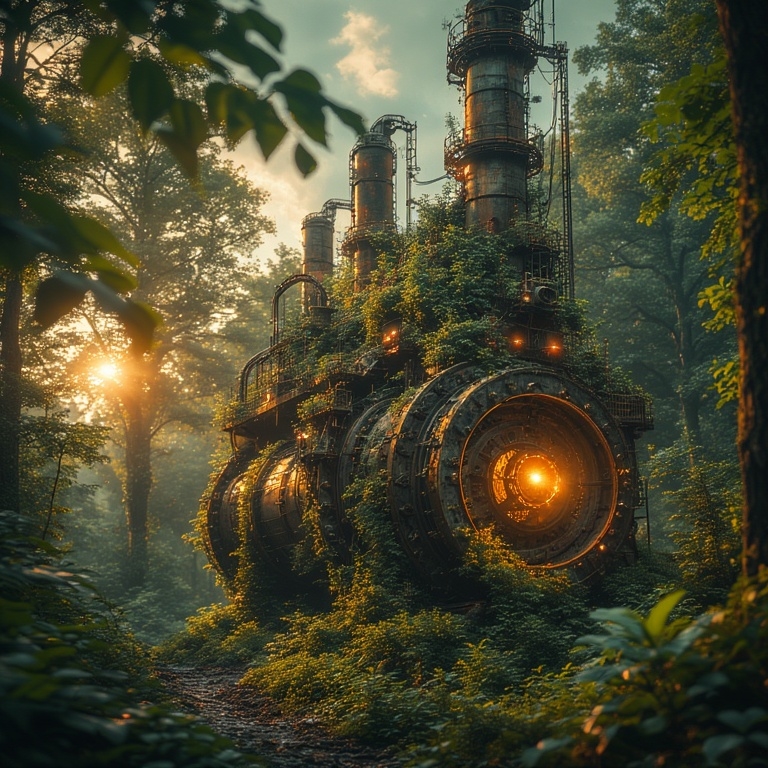



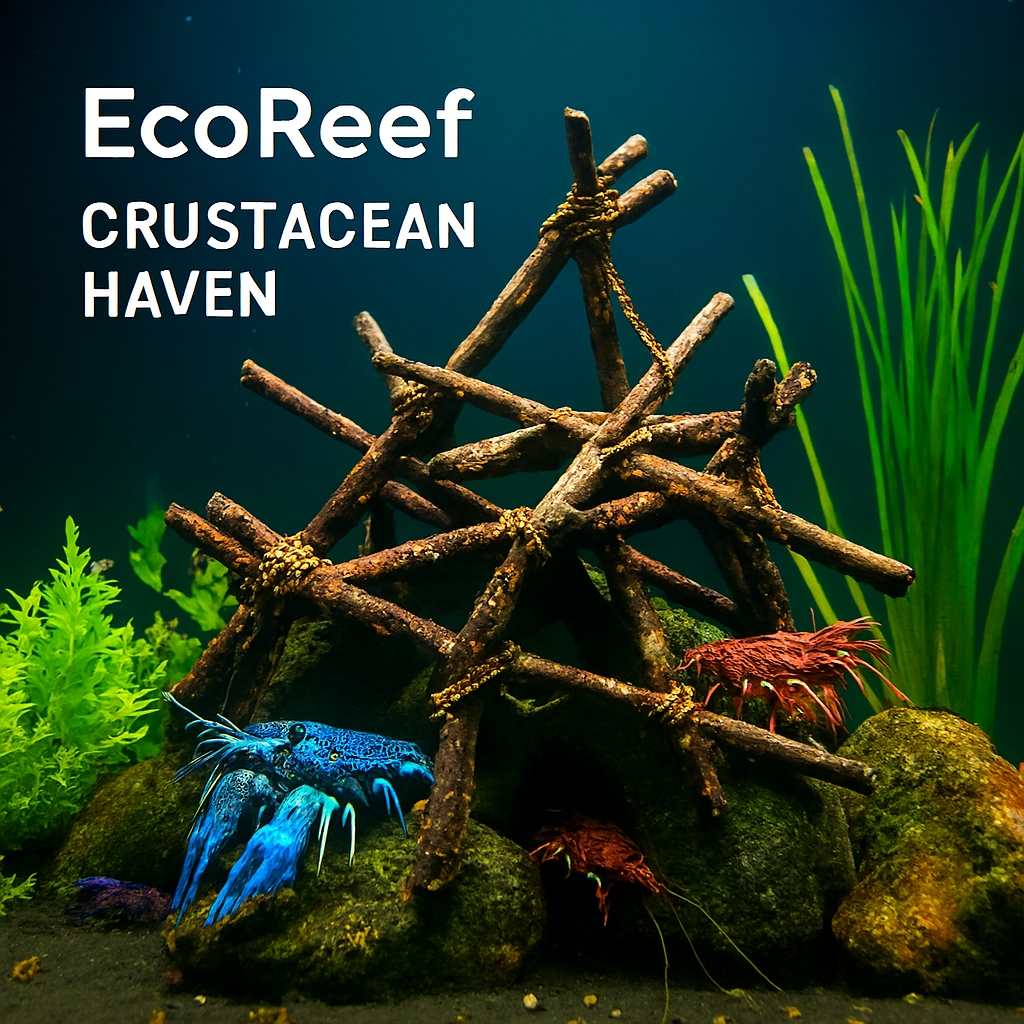
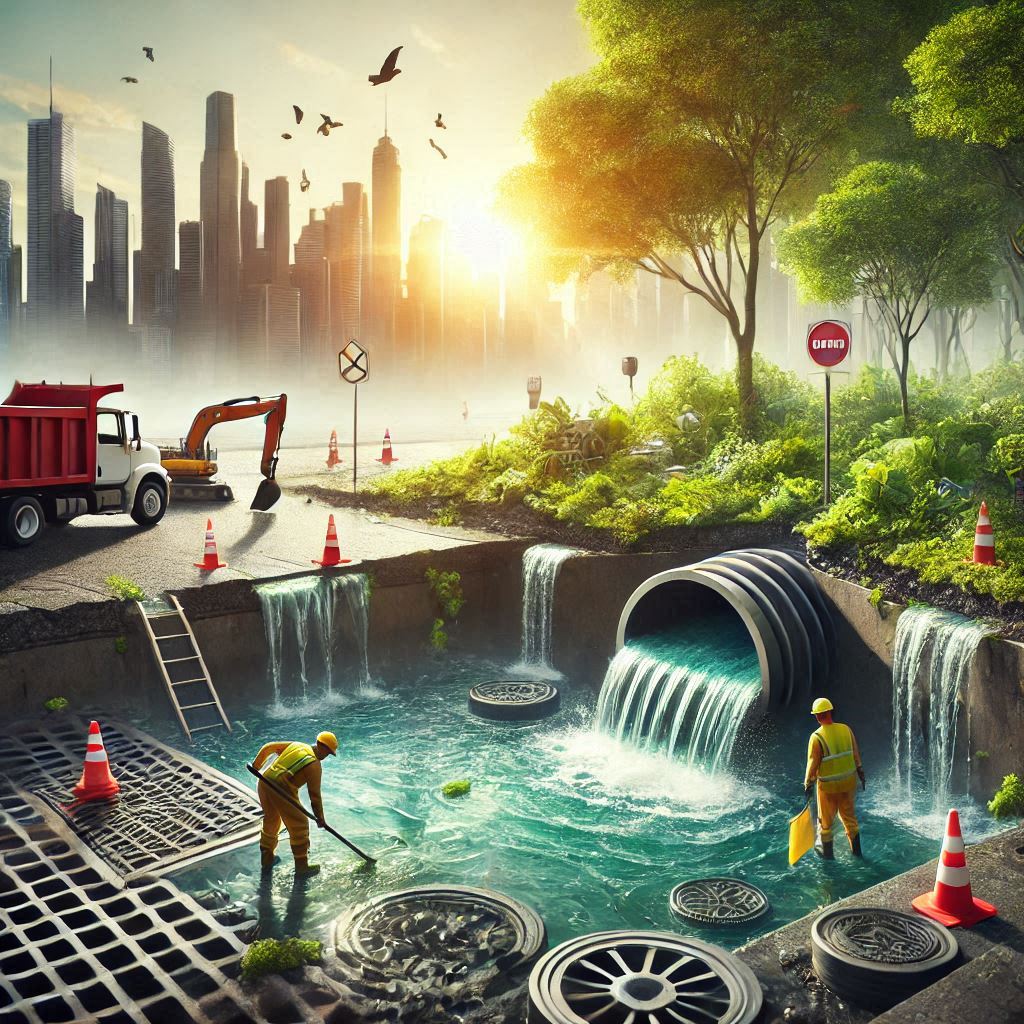

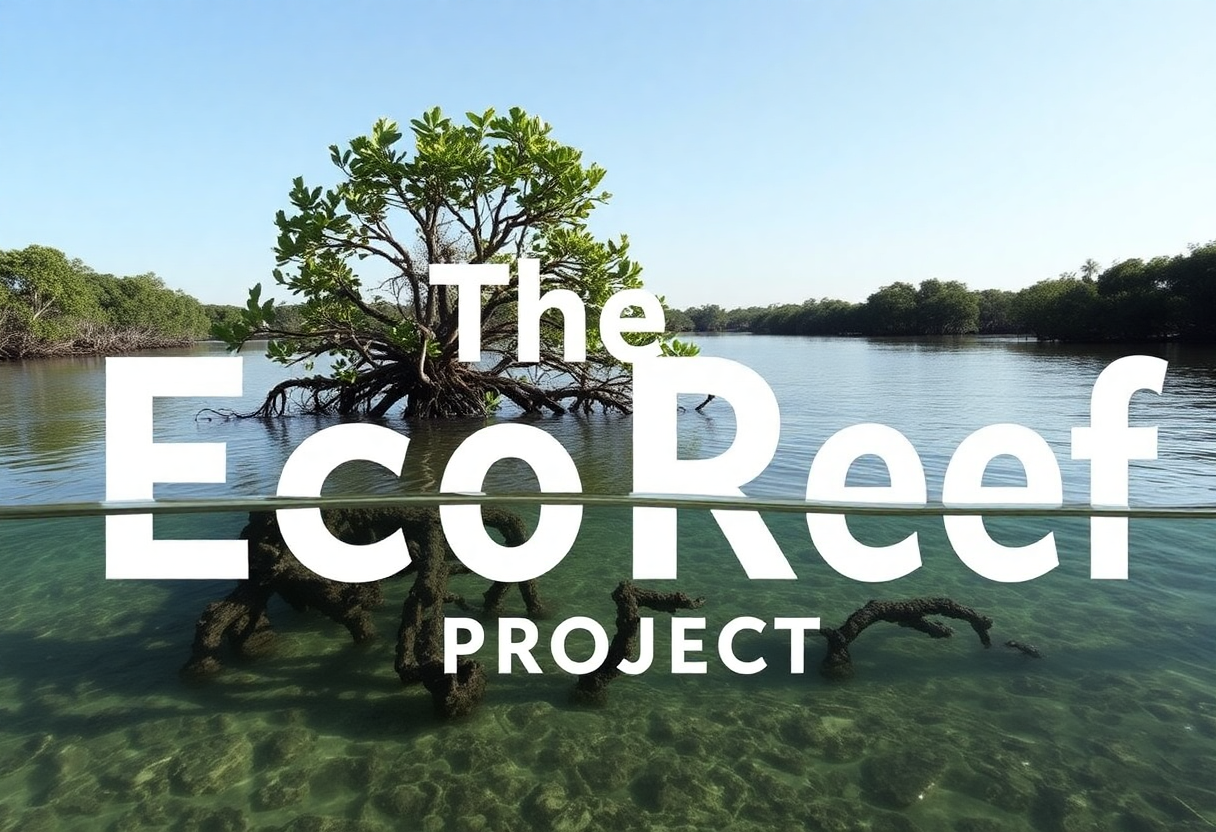


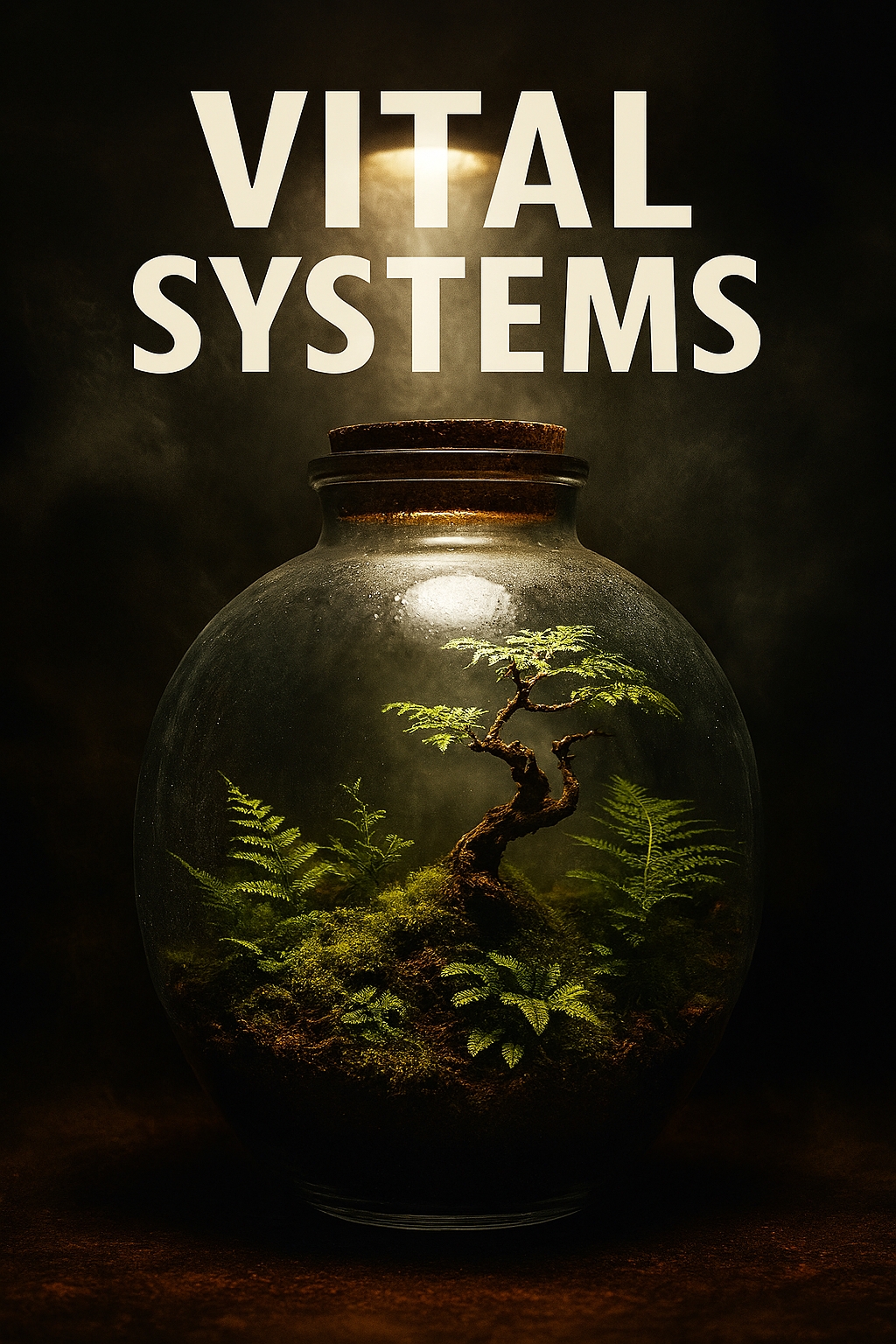

Leave a Reply